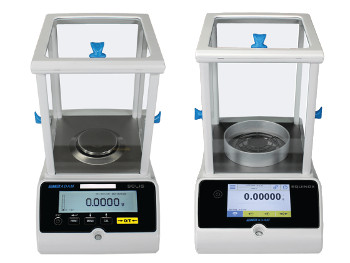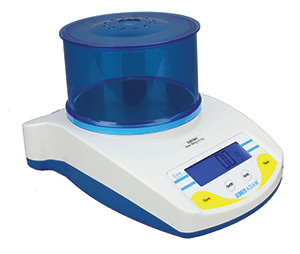
Environmental scientists focus on the planet and the environment, but what does that have to do with scales? Laboratory balances play a critical role in weighing soil, water, vegetation, metals and waste. They’re used to measure key factors in soil, water, air and vegetation to improve sustainability, conservation and predictions of environmental shifts like global climate change.
Environmental Sciences
The environmental sciences – which study the living and non-living parts of Earth – include a wide range of academic fields from biology, chemistry and geology to zoology, ecology and physics.
Environmental labs analyze environmental samples determine the quality of food, milk, animal and plant tissues, water (including public water supplies, surface water, ground water, recreational waters and sewage), air, building materials, soil, land and solid waste. Using that data, they create computer models to study the impact of changes to these factors can cause to the environment and the world at large.
Chemistry
Semi-micro and analytical balances offer the high levels of precision and readability, along with complex weighing applications, needed for the environmental sciences.

For example, let’s look at environmental chemistry, which explores the various chemical processes and the changes they make to the environment. Environmental chemistry focuses on water pollution and soil contamination, exploring the effects of chemicals (including fertilizers and heavy metals) and their impact on soil, different plants and even on animals.
Chemistry applications often involve measuring the small quantities of matter that result from putting samples through numerous reactions (such as being processed, filtered, mixed with reagents or isolated from a solution), so fine readabilities are critical.
Ecology
Ecology, the branch of biology that studies the relationships of organisms to each other and their surroundings, helps inform agriculture by finding ways to keep soil healthy and productive.
Analytical balances, precision balances and moisture analyzers all play a role in agriculture to maintain healthy growing conditions in the soil (including microbial content, nutrient content, PH levels, humidity and oxygenation), monitoring seed conditions and testing pesticides, chemical additives and fertilizer to ensure food safety.
Field study requires portability and Adam’s Highland portable precision balance fits the bill. Unlike most other balances at its price point, Highland offers internal calibration, providing users with the confidence that their balance remains accurate and properly calibrated without the need to carry calibration weights into the field.

Moisture analyzers like our PMB can be used for soil testing in a variety of ways, from farming (is the soil being properly irrigated for crops?) to weather (studying the effects of drought or monsoons on the land).
Waste Treatment
As we discussed in our blog post “Balances and Moisture Analysis for Wastewater Plants,” moisture analyzers may also be used for quality control in wastewater treatment. To effectively treat wastewater, it’s important to know the percentage of water versus minerals and determine the composition of the “cake” (the solids that remain after water has been removed from sludge).
If you have any questions about using Adam lab balances or any other Adam products, reach out to us with your questions and we’ll be happy to help!

